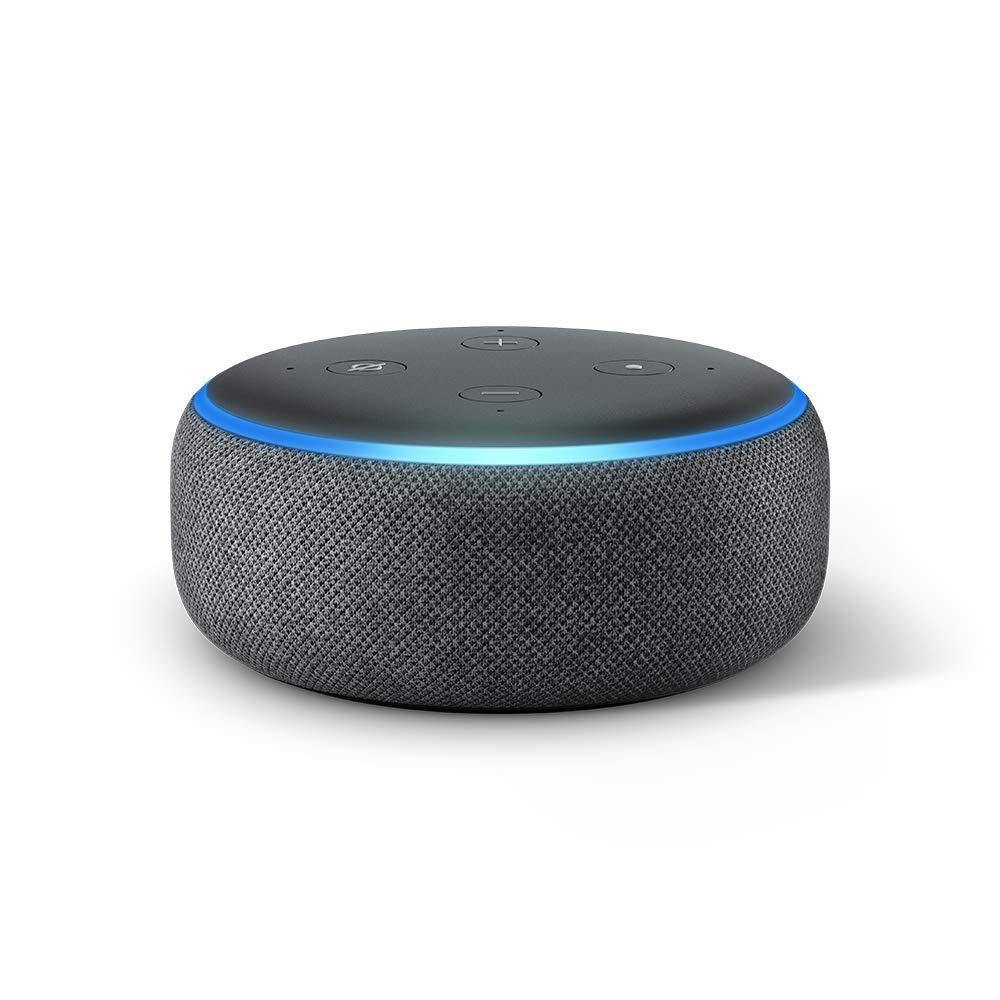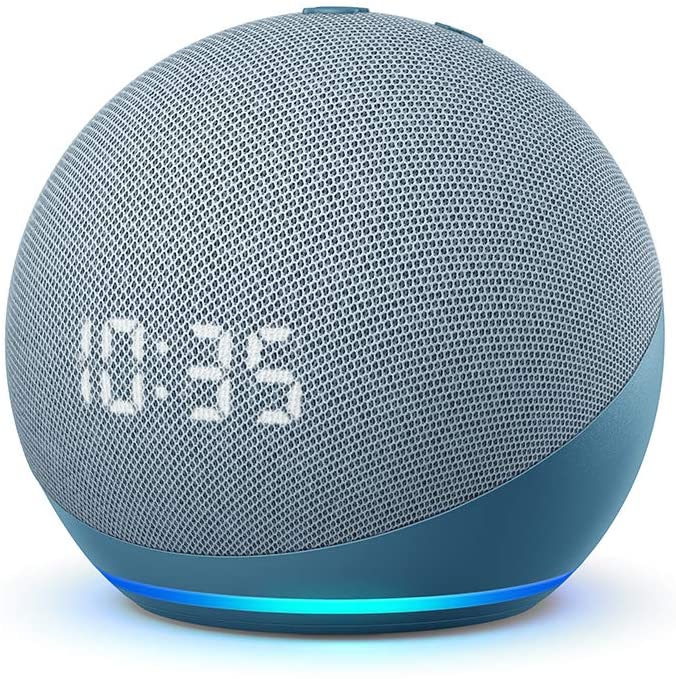Amazon Echo Dot 3rd Gen vs 5th Gen: What should you buy?
Which of Amazon’s budget smart speakers is best?

The 3rd-gen Amazon Echo Dot is its least expensive smart speaker, but sounds great for its price and its low profile lets you put it anywhere. However, it lacks some of the sensors found in the 5th-gen model, and it's only available in one color.
For
- Inexpensive
- Nice design
- Good audio for size
Against
- Lacks temperature, motion sensors in 5th-gen Echo Dot

The 5th-gen Amazon Echo Dot has temperature and motion sensors, and can be used as an extender for an eero Wi-Fi mesh router. We also prefer the model with the clock, which can also show the weather and be used as a timer. However, its bigger shape isn't for everyone.
For
- Better sound performance
- Eero built-in
- Room temperature sensor
Against
- No more 3.5mm line out
The Amazon Echo Dot has been one of the most popular smart speakers, because, well, it’s cheap. Amazon typically sells the Echo Dot for less than $50, and often bundles it with some other smart home device, such as a smart light bulb or video doorbell, making it all the more affordable to acquire one of the best Alexa speakers.
At the moment, Amazon is selling two versions of the Echo Dot: The Amazon Echo Dot (3rd gen), and the Amazon Echo Dot (5th gen). Both are two of the best smart speakers, but have different capabilities and different prices. In this guide, we’ll compare the Amazon Echo Dot 3 vs. 5 to help you decide which you prefer.
Amazon Echo Dot 3 vs. 5: Specs
| Row 0 - Cell 0 | Echo Dot (Gen 3) | Echo Dot (Gen 5) | Echo Dot with Clock (Gen 5) |
| Price | $34.99 | $49.99 | $59.99 |
| Year Released | 2018 | 2022 | 2022 |
| Size | 3.9 (dia) x 1.7 inches | 3.9 (dia) x 3.5 inches | 3.9 (dia) x 3.5 inches |
| Color options | Charcoal | Charcoal, white, blue | White, blue |
| Speaker | 1.6-inch | 1.6-inch | 1.6-inch |
| Ports | 3.5mm audio | 3.5mm audio | 3.5mm audio |
| Sensors | n/a | Temperature, motion | Temperature, motion |
| Display | No | No | Yes |
Amazon Echo Dot 3 vs. 5: Price
Whichever Echo Dot you choose, you’re not going to pay a heckuva lot. The 3rd-generation Echo Dot typically sells for around $35. The 5th-generation Echo Dot is listed at $49, while the 5th-generation Echo Dot with Clock — which has a small LCD display that shows the time — is about $10 more than the version without a clock.
However, some of the best Amazon deals often bring big discounts to the Echo Dot lineup, so you can usually find them for much less than their list price.
Amazon Echo Dot 3 vs. 5: Design
The 3rd-generation Echo Dot has roughly the same hockey puck shape as the first two generations; however, it has fabric wrapping around its sides, and has a slightly curved top, where you can find its control buttons and a circular LED ring.
The 5th-generation Echo Dot has a completely different shape; like the larger Amazon Echo (4th Gen), the newest Echo Dot is spherical, and looks like a Magic 8-Ball that’s sitting on its flat side. The majority of the Echo Dot is wrapped in the same fabric as the 3rd-generation Echo Dot, but the rear of the device, where you plug in the power, is hard plastic. It’s not as elegant as the Apple HomePod Mini, but it’s a nice look.
Four buttons on the top let you control the Echo Dot, but in this model, the LED status ring has been moved to the bottom. Check out our guide to decoding Alexa’s flashing lights if you’ve ever unsure what the current LED color means.
The Echo Dot with Clock, as you might imagine, looks the same as the 5th-gen Echo Dot, but in the middle of the face is a small LCD display that shines through the fabric, showing the time. Amazon once made an Echo Dot with Clock shaped like the 3rd-gen model, but now the spherical version is the only “with Clock” Echo speaker available.
Amazon Echo Dot 3 vs. 5: Audio quality
Both versions of the Echo Dot have a single 1.6-inch speaker. In our tests, we really didn’t hear much of a difference between the two; the 5th-gen model had a bit more bass, owing to the larger size of the device. Both are best when you want a little background music, or to listen to news or podcasts. However, neither can hold a candle to larger smart speakers like the Sonos One, HomePod Mini, Google Nest Audio, or even the full-size Amazon Echo.
If you know how to use Alexa, you’ll be able to stream all kinds of audio using your speaker, from music and meditations to podcasts and audiobooks. See how to play Spotify on Alexa and how to Use Multi-Room Music with the Echo Dot for making the most of the speaker.
Amazon Echo Dot 3 vs. 5: Extra features
The 5th-generation Amazon Echo Dot has a few extra smart home features that you won't find in the 3rd-gen model. For starters, it has a temperature sensor and a motion sensor, which you can use as part of Alexa routines. For example, you could create a routine to turn on a fan if the Echo Dot measures a temperature of more than 80 degrees F and detects someone in the room.
Additionally, the 5th-gen Echo Dot can be used as a Wi-Fi repeater for the eero mesh router. While not as fast as a bona fide satellite, it can provide throughput up to 100 Mbps and up to 1,000 square feet of coverage. You shouldn't rely on it for major stuff, but it's handy if you want to cover some corner of your house.
Amazon Echo Dot 3 vs. 5: Which should you choose?
If you're on a budget, then the 3rd-generation Echo Dot makes the most sense. It’s $10 less expensive, is nearly as good when it comes to audio quality, and gives you access to all the best Alexa skills and Alexa tricks just the same as the newer model.
Plus, the more compact shape of the 3rd-generation Echo Dot makes it easier to place in tighter spaces, and companies have made a number of accessories that let you mount it on a wall or next to an outlet.
However, if you want to raise your smart home's IQ, then the 5th-gen Echo Dot — and its extra capabilities — make more sense. We do think the Amazon Echo Dot with Clock is worth the extra dough; having a small clock that can show you the time and temperature and be used as a timer is incredibly useful. That’s why is the one of the best smart home devices we recommend — period.
Regardless of which model you choose, it's worth waiting for a major sales event like Black Friday or Prime Day, as Amazon often discounts both devices, thereby saving you even more money.
Sign up to get the BEST of Tom's Guide direct to your inbox.
Get instant access to breaking news, the hottest reviews, great deals and helpful tips.

Michael A. Prospero is the U.S. Editor-in-Chief for Tom’s Guide. He oversees all evergreen content and oversees the Homes, Smart Home, and Fitness/Wearables categories for the site. In his spare time, he also tests out the latest drones, electric scooters, and smart home gadgets, such as video doorbells. Before his tenure at Tom's Guide, he was the Reviews Editor for Laptop Magazine, a reporter at Fast Company, the Times of Trenton, and, many eons back, an intern at George magazine. He received his undergraduate degree from Boston College, where he worked on the campus newspaper The Heights, and then attended the Columbia University school of Journalism. When he’s not testing out the latest running watch, electric scooter, or skiing or training for a marathon, he’s probably using the latest sous vide machine, smoker, or pizza oven, to the delight — or chagrin — of his family.
